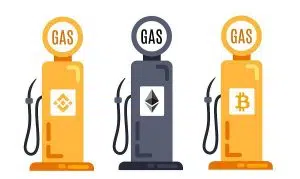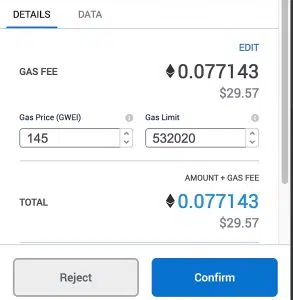Contents
Blockchain technology has been around since 2009 but until recently, it was fairly underutilized. This had the benefit of making the transaction fees relatively affordable. All for that change in 2020 with the mainstream adoption of blockchain technology, especially cryptocurrencies like Bitcoin, Ethereum and various other altcoins.
The trend shows no sign of slowing down. With the introduction of NFTs and the rise in popularity of Web3, transactions on the blockchain network are at an all-time high. This has had precisely two side effects. The first and most positive is that the Web3 space and the NFT market have become extremely profitable spaces to enter. The sad downside is that with the rise in transactions, the fees for these transactions are also relatively high compared to only 10 years ago. These mandatory fees pose the primary barrier to entry for most people into an otherwise lucrative industry.
That being said, gas fees are not complicated to understand. By the end of this article, you’ll not only understand why gas fees exist but also how to optimize your transactions to pay the lowest gas fees possible.
What Are Ethereum Gas Fees?
Three things in this life are certain: Death, Taxes and Ethereum gas fees. The native cryptocurrency of Ethereum (ETH) is thus the metric used to measure fees on the Ethereum blockchain. ETH fees are the price paid to make a transaction on the blockchain. Considering they are used to facilitate transactions, they experience the same laws of supply and demand that forex currencies are subject to.
The brand new newsletter with insights, market analysis and daily opportunities.
Let’s grow together!
Another exciting function of the Ethereum gas fees is that it prevents the network from being flooded by “malicious users spamming the network” with ill-intended transactions. Who knew that having a barrier to entry for a technology could actually have a positive side effect. That being said, it is important to understand this and what precisely gas fees are in order to optimize your transactions.
What is gas?
There are two primary reasons that gas (ETH) exists. The first is to facilitate transactions and interactions on the Ethereum network. The other reason, which is embedded in the first, is to compensate the Ethereum minors for their time, effort and energy consumption during their verification process of mining the cryptocurrency.
All cryptocurrencies have gas fees and those fees are usually paid in the currency native to that blockchain. Due to its root functions listed above, it is quite volatile and vulnerable to a multitude of factors. Those are “block time” and “throughput” of the transaction. The former refers to the time that it takes to for a new block to be formed in a specific blockchain, while the latter refers to how many transactions a block is capable of process. In the world of cryptocurrency, speed is more valuable than digital gold.
When comparing Bitcoin, Ethereum and Solana, their block time and data block size tell us everything we need to know. Bitcoin’s block time is approximately 10 minutes and its block size maxes out at 1 MB. This block size facilitates a range of transactions from 500 to 5 k+.
When compared to Ethereum and Solana, Bitcoin is by far the most expensive blockchain to process a transaction through. Solana is far cheaper than Ethereum with a block time of 0.4 seconds for an impressive 20 k + transactions compared to Ethereum’s underwhelming 70 transactions for 13 seconds. Despite all of this, Ethereum is the most popular cryptocurrency used for DeFi, Web3 and NFTs. There’s no wonder that the ETN gas fees have soared sky-high.
How to calculate Ethereum gas fees?
The metric used to calculate a single transaction on the Ethereum blockchain is far less than 1 ETH (Ethereum/ Ether) and is thus calculated as a fraction of an ETH. This fractal is called a “wei” and is equal to a quintillion of 1 ETH. The most frequently used denomination of the “wei” is the gigawei (1 billion “wei”) and this is referred to as the “gwei”. For clarity, we will be using the gwei for the rest of this article. When checking on your Ethereum transactions, it is common to see gwei used by the “gas tracker”.
Now that you’re up to speed, it’s time to get to the fun stuff. Calculating your Ethereum “treasure chest”. This is a compound equation because it involved multiple parts. While at first glance you might find a newly minted “CryptoPunks” NFT and think that paying a few hundred gigawei is a steal, at least it’s not 1 ETH, but you’d be mistaken because the listed price is not the full cost of the transaction. Since the update to the Ethereum fee mechanism in August 2021, the fees on the Ethereum network transactions have been calculated using this formula:
Total fee = gas units (limits) x (base fee + tip)
This equation lists three separate parts: namely the “gas units/ limits” the “base fee” and finally the “tip”. The “gas unit” is also called the limit; this is the maximum gas fee you declare you are willing to spend on a specific transaction. The “base fee” is the opposite of the first amount and refers to the absolute minimum gas cost for the transaction to be executed on the Ethereum blockchain.
The last component is the “tip” also referred to as the “priority fee” and this particular fee helps nudge your transaction a little further ahead in the queue so that it gets processed sooner rather than later. With these three numbers in mind, calculating your total gas fee is a breeze.
Gas fees are so high, why?
As with most things, looking at the past data usually sheds a light on the current trends. That is why it is essential to track the fluctuations in the price of Ethereum gas fees by looking at the record of its price over the last few months.
|
|
Table 1: The Record of Ethereum Gas Price (Gwei) in 2022
The price of gwei (Ethereum) is constantly changing due to a fluctuation in the supply and demand of various coins, especially Bitcoin and Ethereum. But Ethereum differs from Bitcoin in one significant way. While Bitcoin is purely reliant on data limits in its proofs to retain its value, Ethereum gets its value from the number of transactions performed on the Ethereum blockchain.
The next factor comes from the last component of the Ethereum gas fee equation. The tip fee allows individuals to pay an additional fee in order to prioritize their transactions on the blockchain. This incentivizes people to increase the amount of ETH they are willing to pay to see their transaction go through. This creates a bidding space in the Ethereum queue and increases the overall gas fees.
Four Tips to Spend Less on Gas Fees
These are a few ways to optimize your transactions and pay the lowest gas fees possible. By following these simple hacks, it will allow you to optimize your transactions and get the most out of your ETH.
- Simulate your transaction
It’s a well-known fact that simulation is the best way to perfect any strategy. This is why apps like “DeFi Saver” can help anyone transacting on the Ethereum blockchain plot out their best move before executing any of their transactions in real-time.
- Avoid the traffic
When putting through your transactions, it’s important to time them well. The last thing you need is to pay twice the gas fees because you decided to buy an NFT at 8 am instead of 8 pm. To avoid these kinds of mistakes, its best to look at Ethereum gas charts to check out the traffic patterns and see which times have the least congestions.
- Optimize your transaction type
The reality is that certain transactions are prioritized on the Ethereum blockchain over others while other types of transactions simply experienced higher gas fees. This is why is it would be beneficial to strategize which transaction types you put through. Another trick is to group similar transactions together and execute them at the same time in order to reduce the overall gas fees.
- Get FREE gas!
There is a way to get ETH by not transacting at all. This is done when you simply delete your variable storage on the Ethereum network. In return for decluttering the network, you get rewarded in FREE ETH as a refund through projects like GasToken.io.
If you keep these simple tips mind, you’ll be trading or optimizing your gas fees like the best crypto traders in the world!
The cryptocurrency world is an ever-changing one. That is one of the things that makes the space so exciting to interact with it is also something that keeps most investors in cryptocurrency and other Web3 technologies on their toes. As goes with most games, before you can play you need to know the rules of the game. Gas fees are one such rule but once you’ve mastered how to reduce them, you’re miles ahead of everyone else and you’re set to unlock an unlimited amount of fun and potential.
Now go on and enjoy your latest NFT collectable!








